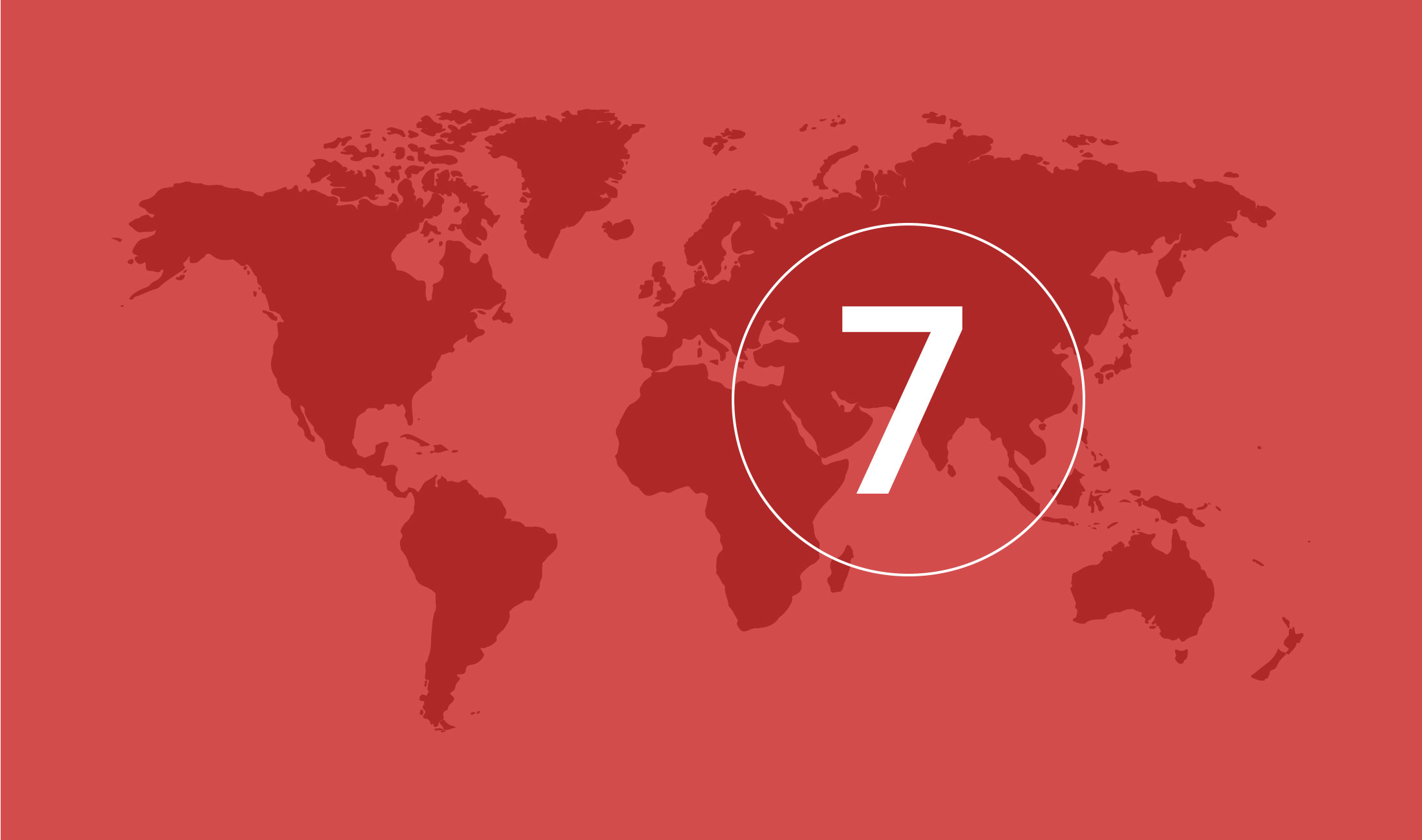
Zambia
Category
7
- 0
- 1
- 2
- 3
- 4
- 5
- 6
- 7
| Risk type | Short | Long |
|---|---|---|
| Sovereign |

|

|
| Public |

|

|
| Bank |

|

|
| Corporate |

|

|
The icons indicate EKN's risk assessment.

No policy established

Normal risk assessment

Restrictive risk assessment

Normally off cover

OECD or EU countries
Country risk analysis
Country risk analysis archive
Country Risk Analysis of Zambia
The latest Country Risk Analysis of Zambia was issued in June 2024.
Background
Zambia’s economy revolves around the copper industry, which accounts for approximately 70 per cent of export earnings. Privatisation of the mining industry during the 1990s increased productivity and, together with high copper prices, helped to strengthen economic growth, which averaged almost 6 per cent annually in the early 2000s. Plummeting copper prices in 2015 due to declining demand from China (Zambia’s most important trading partner) led to a dramatic decline in export earnings. This roughly coincided with the country entering an energy crisis caused by neglected infrastructure and drought. As a consequence, growth has slowed, government finances have deteriorated and international reserves have dwindled. The Zambian kwacha has lost nearly 70 per cent of its value against the USD since 2015, contributing significantly to the country’s increasing debt-to-GDP ratio.
Given Zambia’s large agricultural sector and dependence on hydroelectric power, the country is exposed to significant climate-change-related risks. Low income levels and weak institutions limit the capacity to prevent risks such as drought, wildfires and storms from increasing. According to the World Bank’s Worldwide Governance Indicators (WGIs), the country’s institutions are ranked in the lower third globally, as evidenced by the poor management of the public debt over the last five years.
President Hakainde Hichilema has been in power since autumn 2021, and there are high hopes that Zambia can return to being one of the more politically and economically well-run countries in sub-Saharan Africa. Thus far, Hichilema has made a positive impression on policy and the economy, not least when successfully completing debt restructuring negotiations to unlock funds from an IMF bailout agreement in 2022 and reaching agreement on settling the public debt in 2024. Hichilema is generally better suited to managing government finances and the economy than his predecessor, Edgar Lungo, which suggests that the country may be about to turn the corner.
Mining sector leads the way out of crisis
Zambia’s economy is moving in the right direction, albeit from a low level. Driven by the mining industry, annual growth is expected to average around 5 per cent during the period 2024–2026. Copper prices are expected to remain high from a historical perspective over the coming years, suggesting continued favourable development for Zambia’s copper industry. In the long term, hopes are high for the Lobito Corridor, a 1,300 km railway connecting Zambia and the Democratic Republic of the Congo with the Angolan port of Lobito on the Atlantic coast, which will transport critical minerals to European and American markets. Inflation halved from 22 per cent in 2021 to just over 11 per cent in 2024 and is expected to continue to fall to 7 per cent over the next few years.
In April 2024, after three years of negotiations, Zambia reached an agreement with its bilateral external creditors. The settlement is intended to cover the country’s external financing gap of USD 7.5 billion during the IMF programme period 2022–2025, offering a way out of the country’s almost decade-long financial crisis. Under the agreement, Zambia is granted a 20-year repayment period at an initial interest rate of 1 to 2.5 per cent during the programme period. If Zambia’s repayment capacity is increased to a certain level after the IMF programme ends, the interest rate will be adjusted accordingly up to a ceiling of 4 per cent, and the repayment period will be reduced.
The agreement entails a NPV-reduction of approximately 40 per cent of the present debt, something that, in combination with favourable developments in the mining sector, may potentially turn government finances around. Meanwhile, in light of the continuing difficult circumstances for government finances, including the default on Eurobonds, EKN remains closed to sovereign risks.
Thinks are looking somewhat brighter on the private side. A trade surplus balance of around 5 per cent has seen international reserves recover from what was, for a number of years, a critically low level. The reserve is now to the equivalent of 3.6 months of imports. The IMF Extended Credit Facility Arrangement of 2022 and the bilateral debt settlement provide additional support for external liquidity. As a result, hard currency liquidity at banks and businesses is expected to continue improving over the coming years. The Zambian kwacha is essentially free floating, smoothing out fluctuations in the economy and contributing to hard currency liquidity. The kwacha strengthened against the US dollar by almost 20 per cent in April 2024 when the bilateral debt settlement was agreed, but has since declined in value.
Given the improved access to hard currency, EKN no longer requires buyers to have their own hard currency earnings when guaranteeing exports to Zambia, and the requirement for a letter of credit for bank risks has also been revoked. The latter is also justified by the reduced risk that any restructuring of public debt will adversely affect the banking sector, as the comprehensive external debt settlement reduces the need for domestic debt restructuring. Nor does this appear to be a priority for either the Zambian government or the IMF. After several years of maintaining a strict policy, EKN has therefore begun to ease its cover policy somewhat.
The negative impact of global climate change continues to present a risk to both growth and government finances. Zambia has experienced the most severe drought in decades during 2024, exacerbated by the weather phenomenon El Niño. The drought affects not only agriculture but also the energy supply and, by extension, the energy-intensive mining industry. The government has been forced to draw up plans to import and ration energy. Although the effects of global climate change are not severe enough to curtail the positive economic trend in the short term, significant costs will accrue in the long term. A sustainable long-term improvement in public finances, along with continued positive development in the mining sector and improved hard currency liquidity, may lead to further relaxation of the policy. Upgrade to country risk category 6 is highly unlikely in the coming year.
Business environment
Zambia’s business and regulatory environment has deteriorated during the economic crisis and is generally considered difficult. Particular problems are posed by the lack infrastructure and by corruption. For transactions that result in a claim, the assessment is that legal proceedings would be protracted and highly complex. However, there has been a weakly positive trend in the WGIs over the last two decades. The country’s percentile rank has improved in the WGIs Government Effectiveness, Rule of Law and Control of Corruption, all of which are now slightly above average for sub-Saharan Africa.
Since taking office in August 2021, President Hichilema has initiated criminal proceedings against high-ranking civil servants and ministers on corruption charges. Zambia’s foreign policy has become more assertive, with a clear focus on economic diplomacy and improved relations with the West. The corporate tax rate has been reduced from 35 to 30 per cent, and a tax deduction for mineral royalties against corporate income tax has been reintroduced to avoid double taxation.
Thus, under President Hichilema, whose background is in the private sector, the conditions for businesses have generally improved, especially in the mining industry. According to the buyers and exporters with whom EKN has contact, the industry is once again confident about the future to the extent that some of the country’s major buyers are considering signing longer contracts of five years, rather than the one-year contracts that have been standard for many years. When it comes to sustainability, EKN:s experience is that certain mines in the country have problems with excessive emissions. EKN requires buyers to comply with international standards, and it is important to ensure that buyers meet the requirements for receiving support from EKN.
EKN’s policy
At present, EKN does not cover any sovereign risks. For other public risks, EKN requires a letter of credit or bank guarantee. Elevated premiums apply to long-term bank and corporate risks.
EKN’s commitment and experience
Most of EKN’s transaction flow in Zambia concerns private buyers in the country’s mining industry. A handful of transactions are completed each year. However, outstanding guarantees largely relate to a single transaction in the energy sector for which the guarantor is the Treasury. EKN:s experience of issuing guarantees for private buyers in Zambia is good. There are currently only minor payment delays in the mining sector, all of which relate to one major client in the country. EKN has experienced payment delays and indemnifications for transactions in the energy sector in the period 2020–2023, which have largely been resolved/recovered.
Further indemnifications will be required in the coming years under the expected Paris Club agreement. Zambia has had nine Paris Club agreements since 1983 and had debts cancelled in the early 2000s through the Heavily Indebted Poor Countries (HIPC) initiative. The agreement currently being negotiated within the Common Framework is therefore the country’s tenth.
More for companies that want to export to Zambia

EKN's guarantees
EKN's guarantees reduce the risk of payment defaults and help banks support businesses. Which guarantee suits your needs?
EKN's guarantees
Guarantee guide
Are you unsure which guarantee is the best fit for your specific transaction? Try our guarantee guide.
Guarantee guide